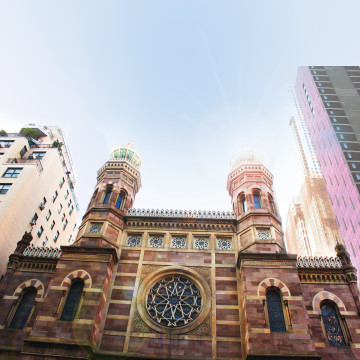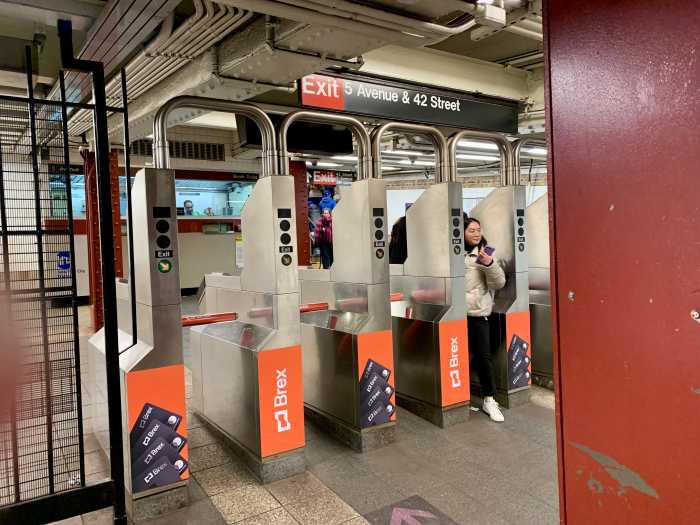
BY JACKSON CHEN | Representatives of landmarked buildings, preservation advocates, and the Real Estate Board of New York all criticized a set floor price standard established for development right sales under the proposed Midtown East rezoning during a February 6 public hearing at Community Board 5.
The rezoning is aimed at bringing modern office development to the stretch of blocks from roughly East 39th to 57th Streets, between Third and Fifth Avenues, and extending east to Second Avenue between East 42nd and 43rd Streets. The proposal is currently in the community board phase of its public review process.
If the rezoning is approved, developers would be able to build with greater floor-to-area ratios (or FARs, which compare total floor space to the size of the land parcel on which a building sits) by purchasing unused development rights from landmarks in the district or contributing to a public realm improvement project.
Striking a balance among better developments, landmark preservation, and benefits for the public, the city recently filled in some blanks by announcing how much of a percentage of the development rights sale would go into a Public Realm Improvement Fund (PRIF).
According to the Department of City Planning, the required PRIF contribution would be calculated as the greater of 20 percent of the development rights sale price or 20 percent — set at $78.60 per square foot — of the value of the incremental square footage allowable under the rights purchase. The agency established a $393 per square foot standard after completing a market study on December 31. DCP added that the floor price would be adjusted by the City Planning Commission every three to five years.
The fund will be run by a nine-member governing group that is expected to include elected officials and representatives of city agencies and local community boards.
Though they often find themselves clashing over preservation issues, the landmarks and real estate communities agree that establishing a floor price standard of $393 per square foot would have detrimental effects, discouraging the development that is the rezoning’s aim.
Paimaan Lodhi, the vice president of urban planning for the Real Estate Board of New York, said whenever REBNY and landmark groups agree on an issue, their united opinion is bound to carry more weight.
“We believe the floor price, both as a concept and the stated appraised value, will discourage transactions and undermine the stated planning goals of the rezoning,” Lodhi said. “The proposed floor price of $393 per square foot seriously overstates the value of air rights in East Midtown.”
Lodhi said the concept of a floor price should be removed outright because its arbitrary pegging is likely to deter any development right sales and is at odds with the spirit of the rezoning.
Sounding a note of unison on the floor price question, Andrea Goldwyn, the director of public policy at the New York Landmarks Conservancy, said landmarks would be disadvantaged if no one wants to buy their unused development rights.
She added that the three to five year reevaluation range was insufficient because the real estate market is unpredictable and could shift drastically in a few years’ time.
From the perspective of St. Patrick’s Cathedral, the presence of a floor price would limit the resources available for its maintenance because it disincentivizes developers from buying its rights, according to Joseph Rosenberg, executive director of the Catholic Community Relations Council who was representing the Archdiocese of New York and the Trustees of St. Patrick’s Cathedral. The floor price, he said, was set at a “wholly unrealistic figure for an assumed minimum sales price.”
“At this amount, it will surely stifle the marketplace for development rights,” Rosenberg said, “leaving both landmarks and the hoped-for public realm improvements underfunded.”
Representatives of organizations who spoke, however, commended the city for setting the contribution rate at 20 percent, since the initial proposed range stretched from 20 to 40 percent.
Community boards affected by the rezoning proposal have a March 13 deadline for completing resolutions for consideration by the Department of City Planning. CB5 does not yet have a date scheduled for approving its resolution.
“This plan will bring substantial new development to Midtown East,” Goldwyn said, assuming the floor price controversy is resolved satisfactorily. “It has been successful in creating certainty for developers and has surpassed its predecessor in what it gives to the public, but that job is not complete.”


































